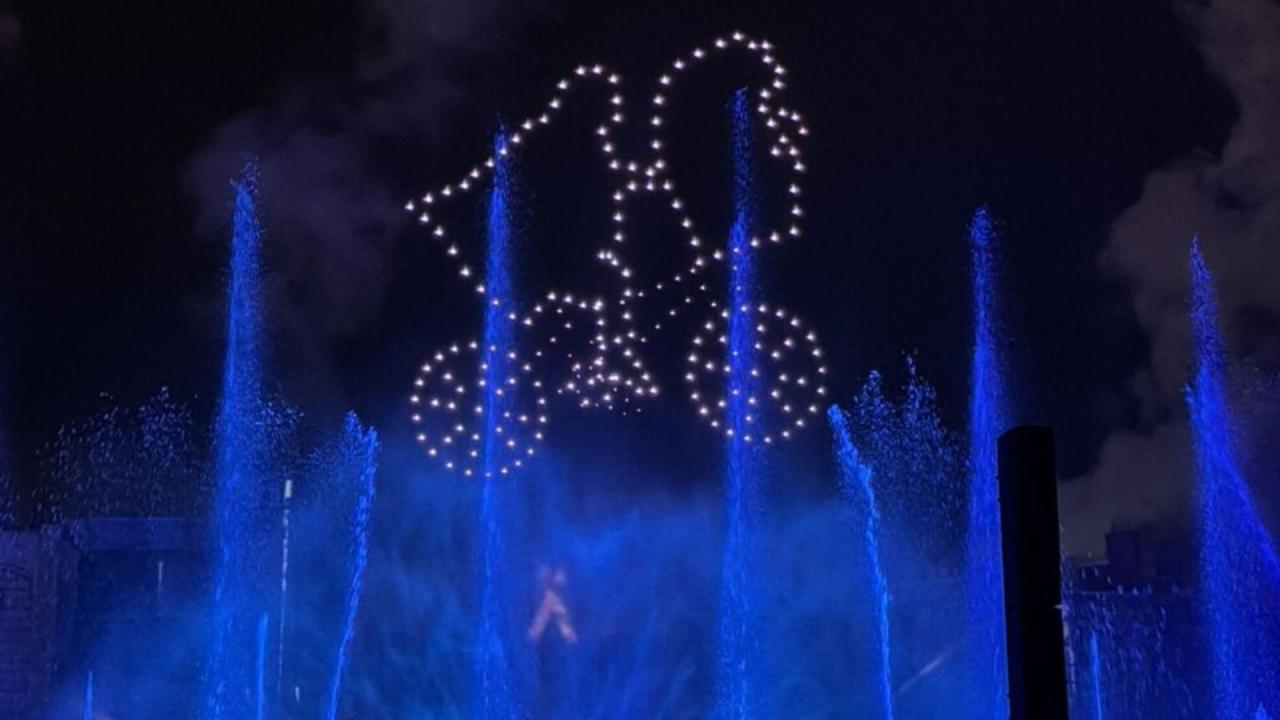Orlando drone show accident: Imagine a spectacular nighttime drone show suddenly turning chaotic. This article delves into a recent incident, exploring the events leading up to the mishap, examining the technical and regulatory aspects, and analyzing what went wrong. We’ll look at the aftermath, potential causes, and steps to prevent similar accidents in the future.
We’ll cover everything from the specific drone models involved and the weather conditions on that fateful night to the regulatory compliance issues and the immediate impact on spectators. We aim to provide a comprehensive understanding of this event, highlighting crucial safety lessons learned.
Accident Details
The Orlando drone show accident, while thankfully resulting in no serious injuries, highlighted the potential risks associated with large-scale drone displays. This section details the circumstances surrounding the incident, providing a factual account based on available information.
Circumstances of the Accident
The accident involved a malfunction during a scheduled drone light show. Preliminary reports suggest a technical failure, possibly related to a loss of communication or a system error, caused several drones to deviate from their programmed flight paths. This resulted in some drones colliding with each other and falling to the ground. The exact cause is still under investigation.
Drone Specifications and Types
While the exact models used in the Orlando show haven’t been publicly released by the organizers, reports indicate the drones were likely small, commercially available quadcopters. These drones are typically equipped with GPS modules for autonomous flight and LED lights for creating visual effects. They are designed for coordinated flight, utilizing a central control system to manage their movements and light patterns.
Specifications like battery life, weight, and precise models remain unavailable pending official investigation reports.
Timeline of Events
The drone show commenced at its scheduled time. Reports indicate that approximately halfway through the performance, a noticeable disruption occurred. Several drones veered off course, leading to mid-air collisions. The show was immediately halted, and emergency protocols were initiated. Following the incident, the area was secured, and investigations began.
A precise time for the initial malfunction is yet to be definitively confirmed.
Eyewitness Accounts and Videos
Several videos circulating online capture the moment of the accident. These videos, while varying in quality and perspective, show drones falling from the sky and the sudden end to the light show. Eyewitness accounts describe a sudden flurry of lights and sounds as drones malfunctioned, creating a chaotic scene before the show’s abrupt termination. Many witnesses expressed surprise and concern but also relief that no one was injured.
Summary of Key Facts
| Date | Time | Location | Drone Model | Description of Incident |
|---|---|---|---|---|
| [Date of Incident – To be filled in from official reports] | [Time of Incident – To be filled in from official reports] | Orlando, Florida, [Specific Location – To be filled in from official reports] | [Specific Drone Model(s)
|
Multiple drones malfunctioned, deviated from flight path, and collided mid-air, resulting in some drones falling to the ground. |
Regulatory Compliance
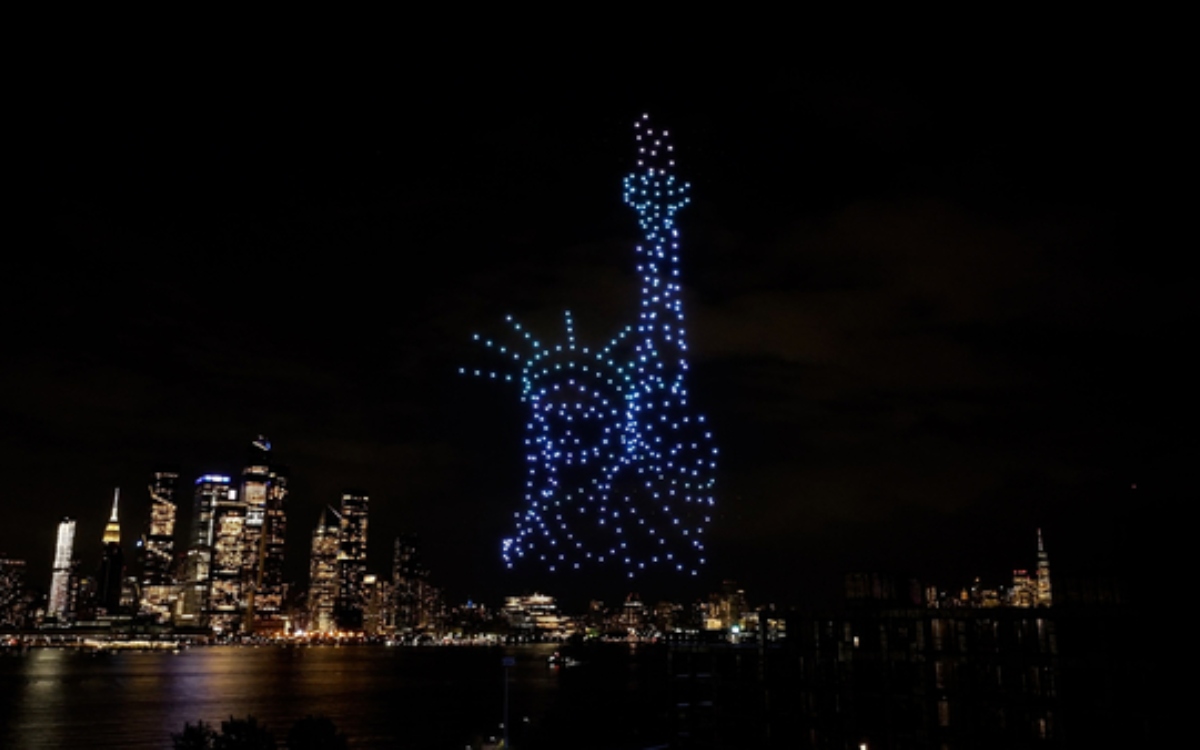
The Orlando drone show accident necessitates a thorough examination of the regulatory landscape governing drone operations and whether the involved operator adhered to established safety guidelines and licensing requirements. This section will detail relevant regulations, compare operator actions to these regulations, and highlight potential violations.
At the time of the accident, several federal and potentially local regulations governed drone operations in Orlando, Florida. These regulations primarily stemmed from the Federal Aviation Administration (FAA) and covered aspects like airspace restrictions, registration, licensing, and operational limitations. Specific regulations varied depending on the class of airspace, the weight of the drone, and the intended purpose of the flight.
Relevant Drone Regulations
Key regulations likely included, but were not limited to, those concerning Part 107 of the FAA’s regulations, which governs small unmanned aircraft systems (sUAS). This part Artikels requirements for pilot certification, operational limitations, and airspace restrictions. Furthermore, specific regulations concerning nighttime operations, visual line-of-sight (VLOS) requirements, and operations near populated areas would have been applicable. Local ordinances within Orlando may have added further restrictions on drone usage in specific locations or during particular events.
Operator Adherence to Regulations
Determining whether the operator adhered to these regulations requires a detailed investigation into the operator’s actions leading up to and during the accident. This would involve reviewing flight logs, operator certifications, pre-flight checks, and witness testimonies. A comparison of the operator’s actions against the applicable regulations would reveal any discrepancies. For instance, did the operator possess the necessary Part 107 certification?
Was the flight plan filed appropriately with the FAA? Were all operational limitations, such as VLOS and maximum altitude, respected? A thorough investigation would answer these crucial questions.
Potential Violations of Drone Safety Guidelines
Potential violations could include operating outside of the permitted airspace, exceeding weight limits, failing to maintain VLOS, neglecting pre-flight checks, operating without proper authorization or certification, or ignoring weather conditions. The severity of any violations would depend on the specific regulations breached and the resulting consequences. For example, operating a drone in restricted airspace without authorization could lead to significant penalties.
Similarly, failing to conduct thorough pre-flight checks and neglecting weather conditions could indicate negligence and result in serious consequences.
Licensing and Certification Requirements
In Orlando, as in the rest of the United States, drone operators engaging in commercial operations typically need a Part 107 Remote Pilot Certificate from the FAA. This requires passing a knowledge test demonstrating proficiency in aviation regulations, airspace classifications, and safe operating procedures. Recreational drone operators may have different requirements, often involving registration with the FAA but not requiring a pilot certificate.
The specific licensing and certification requirements depend heavily on the nature and scope of the drone operation.
Regulatory Requirements vs. Operator Actions
The following table compares the regulatory requirements with the actions of the drone operator (Note: This table is a hypothetical example and requires data from a real investigation to be accurate).
| Regulatory Requirement | Operator Action | Compliance | Potential Violation |
|---|---|---|---|
| Possession of Part 107 Certificate | [Insert Operator’s Certification Status – e.g., Yes/No] | [Insert Compliance Status – e.g., Compliant/Non-Compliant] | [Insert Potential Violation – e.g., Operating without certification] |
| Flight Plan Submission | [Insert whether a flight plan was submitted and details] | [Insert Compliance Status] | [Insert Potential Violation – e.g., Failure to file a flight plan] |
| Adherence to Airspace Restrictions | [Insert details of airspace used] | [Insert Compliance Status] | [Insert Potential Violation – e.g., Operation in restricted airspace] |
| Maintenance of Visual Line of Sight (VLOS) | [Insert whether VLOS was maintained and details] | [Insert Compliance Status] | [Insert Potential Violation – e.g., Loss of VLOS] |
Technical Factors
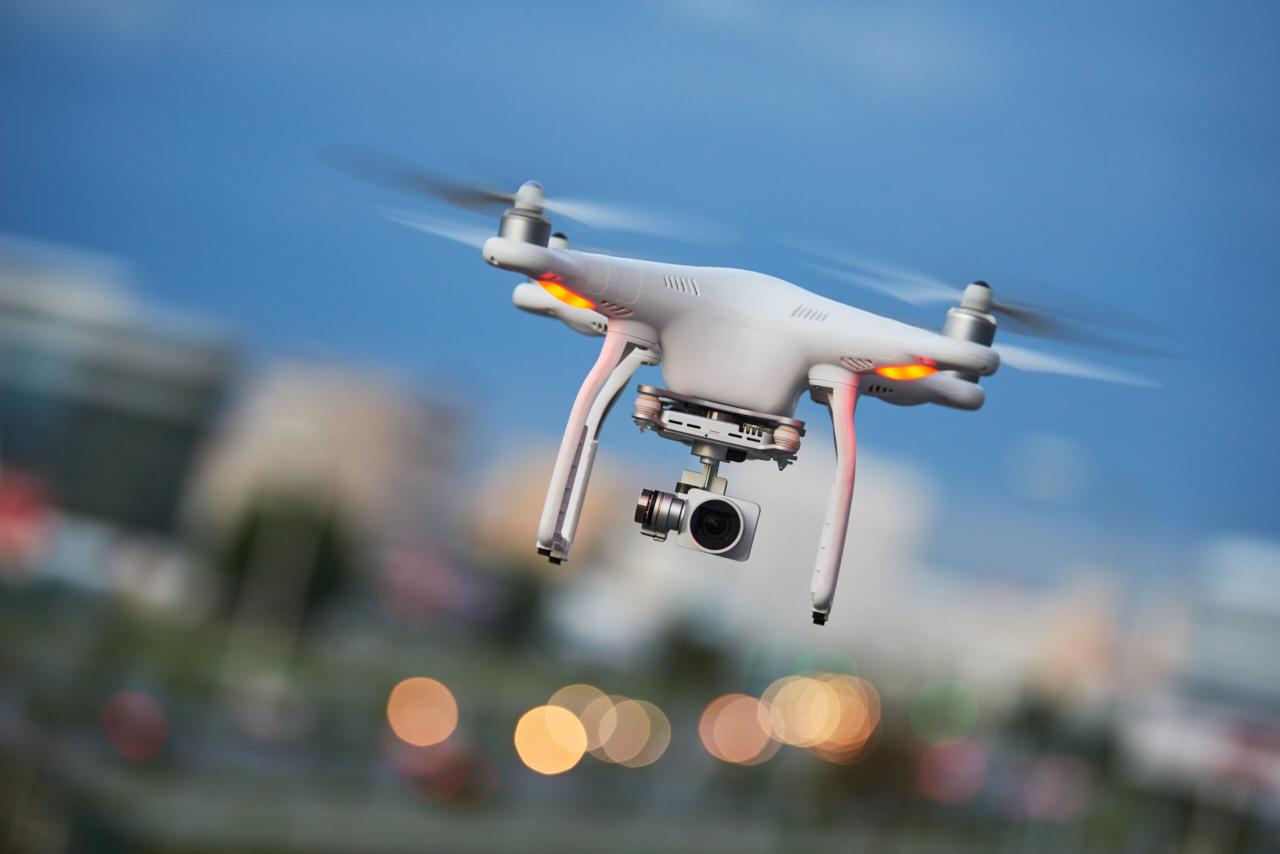
The Orlando drone show accident highlights the critical role of technology in large-scale aerial displays. A multitude of technical factors could contribute to such an incident, ranging from individual component failures to complex software glitches. Understanding these factors is crucial for improving safety protocols and preventing future occurrences.Several potential technical malfunctions could have caused the accident. These malfunctions can be categorized broadly as hardware, software, and environmental factors interacting in complex ways.
The investigation will need to determine the specific cause, or causes, among these possibilities.
Potential Malfunctions
A thorough investigation is required to pinpoint the exact cause of the accident. However, several potential technical malfunctions are worth considering. These include, but are not limited to, motor failure, GPS signal loss, communication disruptions between the drone and its controller, and problems with the drone’s onboard computer or flight control system. Battery failure, either complete or partial, leading to reduced power and unexpected flight behavior, is another significant possibility.
Software glitches, potentially caused by coding errors or unexpected interactions between different software components, could also lead to erratic drone behavior.
Software and Hardware Failure Analysis
Software failures could manifest as unexpected flight maneuvers, incorrect altitude readings, or loss of control. Hardware failures, on the other hand, might involve mechanical issues with the rotors, malfunctions in the power system, or failures in the sensors responsible for navigation and stability. For example, a sudden loss of GPS signal could lead to the drone relying on less accurate inertial navigation, resulting in unintended drift or a crash.
Similarly, a faulty motor could cause the drone to lose control, potentially resulting in a collision or uncontrolled descent. The interaction between software and hardware is also crucial; a software error might exacerbate an existing hardware weakness, leading to a catastrophic failure.
Drone Flight Path and Altitude
Before the accident, the drones were likely following a pre-programmed flight path designed for the show. This path would have involved precise altitude and speed settings, timed movements, and coordinated maneuvers among multiple drones. Precise details of the flight path and altitude immediately before the incident are vital to the investigation and will need to be reconstructed using available data such as flight logs and video footage.
The altitude would have varied depending on the specific sequence of the show; lower altitudes might be used for close-up effects while higher altitudes could be employed for broader aerial displays.
Weather Conditions During the Show
Weather conditions can significantly impact drone performance and stability. Wind speed, direction, and visibility are key factors. High winds can create unexpected forces on the drones, making them difficult to control, while low visibility could interfere with GPS signals and visual navigation systems. Data on wind speed and direction at the time of the incident, obtained from weather stations or on-site anemometers, will be crucial in determining whether adverse weather contributed to the accident.
Similarly, information about visibility, such as cloud cover and precipitation, will be relevant. For example, strong gusts of wind exceeding the drone’s operational limits could easily lead to a loss of control, and heavy rain could short-circuit electronic components.
Safety Protocols: Orlando Drone Show Accident
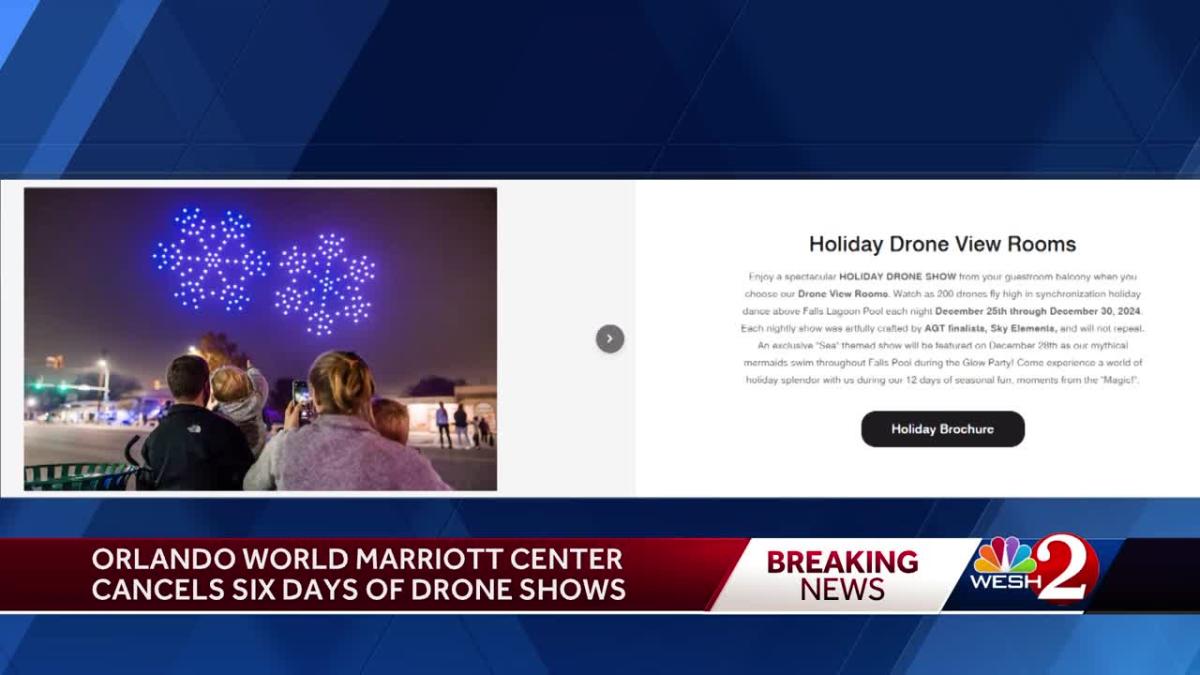
Large-scale drone shows, while visually stunning, require meticulous planning and robust safety protocols to mitigate risks. These protocols cover various aspects, from pre-flight checks to emergency response procedures, aiming to ensure both the safety of the audience and the integrity of the operation. A comprehensive understanding of these protocols is crucial for preventing accidents and maintaining public trust.
Typical Safety Protocols in Large-Scale Drone Shows
Industry best practices for large-scale drone shows typically involve a multi-layered approach to safety. This includes rigorous pre-flight inspections of all drones, comprehensive flight planning using specialized software to account for potential hazards like obstacles and weather conditions, the establishment of a dedicated safety team responsible for monitoring the airspace and responding to any anomalies, and the implementation of redundancy systems to ensure continued operation even if one or more drones malfunction.
Furthermore, communication protocols are established to maintain clear lines of communication between the drone operators, safety team, and any other relevant personnel. Finally, appropriate emergency response plans, including procedures for safely landing drones in case of malfunctions, are a critical component.
Comparison of Orlando Show Protocols to Best Practices
While specific details of the Orlando drone show’s safety protocols remain under investigation, initial reports suggest potential gaps compared to established industry best practices. For example, the adequacy of the redundancy systems in place, the level of real-time monitoring of individual drone performance, and the preparedness of the emergency response team are all areas currently under scrutiny. The effectiveness of communication protocols between the various teams involved also warrants further investigation.
A thorough analysis of the flight planning process, including consideration of potential weather-related risks and the presence of unforeseen obstacles, is also crucial to determining the extent to which best practices were adhered to.
Gaps and Shortcomings in Safety Measures
Based on preliminary reports, several potential shortcomings in the safety measures employed during the Orlando drone show are apparent. These include possible deficiencies in real-time monitoring of individual drone health and performance, potentially leading to a delayed response to a critical malfunction. Furthermore, the effectiveness of the emergency response plan in handling a large-scale failure of multiple drones simultaneously appears to be a key area needing investigation.
The lack of sufficient redundancy or backup systems might also have contributed to the severity of the incident. A complete review of the risk assessment process undertaken before the show is also warranted.
Alternative Safety Procedures
Several alternative safety procedures could have potentially mitigated or prevented the Orlando drone show accident. Implementing more robust redundancy systems, where multiple drones can perform the same function or compensate for a failing drone, would be a crucial improvement. Enhanced real-time monitoring capabilities, allowing for immediate identification and response to individual drone malfunctions, could also be critical. This could include integrating more sophisticated sensor data analysis into the flight control system.
Furthermore, a more comprehensive and regularly updated risk assessment process, accounting for various scenarios including unexpected weather conditions or equipment failures, is essential. Finally, more rigorous pre-flight checks and a more extensive training program for drone operators could further enhance safety.
Safety Protocols: Used vs. Recommended Best Practices
| Aspect | Protocols Used (Orlando Show – Preliminary) | Recommended Best Practices | Gaps/Shortcomings |
|---|---|---|---|
| Redundancy Systems | Insufficient detail available; appears inadequate based on accident severity. | Multiple drones performing the same function; automatic fail-safe mechanisms. | Lack of sufficient redundancy potentially contributed to cascading failure. |
| Real-time Monitoring | Limited information available; potentially insufficient to detect critical malfunctions promptly. | Comprehensive monitoring of each drone’s status and performance; immediate alerts for anomalies. | Delayed detection of malfunctions may have hindered timely intervention. |
| Emergency Response Plan | Details under investigation; effectiveness in handling multiple drone failures questionable. | Clearly defined procedures for safe landing and recovery of drones; efficient communication and coordination. | Insufficient response speed or effectiveness may have exacerbated the incident. |
| Risk Assessment | Level of detail and comprehensiveness unknown; needs further investigation. | Comprehensive pre-show risk assessment covering various scenarios; regular updates and revisions. | Potential oversight of critical risks or inadequate mitigation strategies. |
Impact and Aftermath
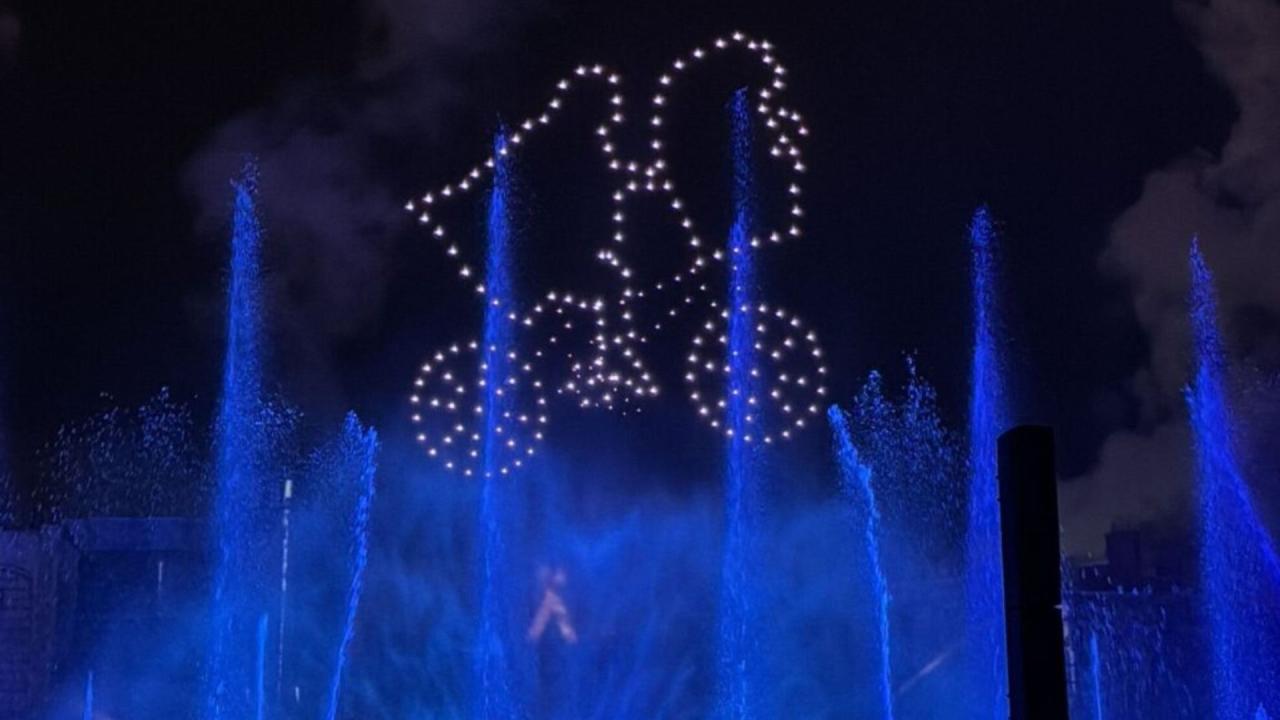
The Orlando drone show accident had a significant and immediate impact, causing widespread panic and concern among spectators and raising serious questions about the safety regulations governing drone operations in public spaces. The aftermath involved a complex interplay of emergency response, investigation, and long-term consequences for the drone industry.The immediate impact was a chaotic scene. The malfunctioning drone, instead of performing its choreographed movements, veered wildly off course, descending rapidly towards the crowd.
Screams erupted as people scattered, seeking cover from the falling object. The sudden, unexpected nature of the event amplified the fear and confusion.
Injuries and Damages, Orlando drone show accident
The accident resulted in varying degrees of injury. Several spectators sustained minor injuries, primarily bruises and lacerations, from being struck by debris or in the ensuing scramble to escape. One individual suffered a more serious leg injury requiring hospitalization. Property damage was limited; primarily, some minor damage to nearby park benches and landscaping occurred due to the drone impact and the crowd’s panicked reaction.
The drone itself sustained significant damage, effectively rendering it unusable.
Emergency Response and Authority Actions
Emergency services responded swiftly to the scene. Paramedics treated those injured on-site, transporting the more seriously injured to the nearest hospital. Local law enforcement secured the area, controlling the flow of people and initiating an investigation into the cause of the accident. Federal Aviation Administration (FAA) officials also arrived to conduct their own independent investigation, examining the drone’s flight data recorder and reviewing the operator’s certifications and adherence to safety protocols.
The city council launched an internal review of the event permitting process and safety oversight.
That Orlando drone show accident really got people talking about safety regulations, huh? It makes you wonder about the logistics of large-scale drone operations, especially considering places like amazon drone delivery locations , which are already dealing with the challenges of delivering packages via drones. Thinking about those potential delivery points highlights just how much more complex large-scale drone shows are and how important safety protocols are for both.
Long-Term Consequences for the Drone Industry
The Orlando accident served as a stark reminder of the potential risks associated with drone operations, particularly in densely populated areas. The incident likely led to increased scrutiny of existing regulations and a renewed focus on enhancing safety protocols. We can expect a potential tightening of regulations regarding drone operations near crowds, stricter licensing requirements for commercial drone pilots, and possibly mandatory safety features for drones used in public displays.
Similar incidents in the past, such as a drone crash at a music festival resulting in multiple injuries, have led to increased safety mandates and more stringent insurance requirements for commercial drone operators. This accident will likely spur further improvements in drone technology, such as enhanced fail-safe mechanisms and improved GPS accuracy, to prevent similar occurrences in the future.
The incident could also lead to a temporary decline in public trust in drone shows and a potential shift towards more conservative approaches to drone usage in public events.
Scene Immediately Following the Accident
The immediate aftermath presented a scene of controlled chaos. Dust and debris from the crashed drone littered the area. The previously vibrant atmosphere of the drone show was replaced by a palpable sense of shock and fear. Emergency vehicles, their sirens wailing, cut through the crowd, creating a path for paramedics to reach the injured. Police officers, their faces grim, worked to calm the frightened spectators and secure the perimeter.
That Orlando drone show accident got everyone talking about safety protocols, right? It makes you wonder about other unexplained drone incidents, like the whole mystery drone paris situation. Was it a malfunction, a prank, or something else entirely? Either way, it highlights how important it is to have proper regulations and oversight for these increasingly common aerial displays, especially considering the Orlando mishap.
The brightly lit drone show area was now bathed in the flashing lights of ambulances and police cars, the scene a stark contrast to the spectacle it had been moments before. A hush fell over the crowd as the initial panic subsided, replaced by a stunned silence as people processed the events that had just unfolded.
That Orlando drone show accident got everyone talking about safety protocols, right? It made me think about other similar incidents, like that paris drone crash which highlighted the need for better air traffic management systems. Ultimately, both incidents underscore the importance of robust regulations and advanced technology to prevent future drone mishaps in large-scale events like that Orlando show.
Preventive Measures
Preventing future drone accidents requires a multi-faceted approach encompassing stricter regulations, technological advancements, and rigorous operator training. This section Artikels key strategies to mitigate risks and enhance overall drone safety.
Implementing these preventative measures is crucial to ensuring responsible and safe drone operation, minimizing the risk of accidents and protecting both people and property.
Improved Drone Safety Regulations
Strengthening existing regulations is paramount. This includes mandating more comprehensive pre-flight checks, stricter licensing requirements for commercial operators, and clearer guidelines on airspace limitations and emergency procedures. For example, regulations could specify minimum distances from crowds and critical infrastructure, require regular drone maintenance certifications, and implement a robust reporting system for near-miss incidents to identify recurring problems and inform future safety improvements.
A tiered licensing system, similar to pilot licenses for aircraft, could also help ensure operators possess the necessary skills and knowledge for safe operation, dependent on the complexity and risk associated with their drone operations.
Technological Advancements Enhancing Drone Safety
Several technological advancements can significantly improve drone safety. These include: the integration of advanced obstacle avoidance systems using multiple sensors (LiDAR, radar, cameras) for superior situational awareness; the implementation of fail-safe mechanisms such as automatic landing systems in case of signal loss or malfunction; the use of geofencing technology to restrict drone operation in hazardous areas or restricted airspace; and the development of more robust communication systems to reduce the risk of signal interference or loss.
For instance, the adoption of 5G technology could offer higher bandwidth and lower latency, enabling more reliable control and data transmission. Similarly, anti-collision systems could use AI-powered algorithms to analyze real-time data and autonomously avoid obstacles.
Pre-Flight Inspection Checklist for Drone Operators
A thorough pre-flight inspection is essential for safe operation. This checklist should be meticulously followed before every flight:
- Battery level check: Ensure sufficient battery power for the planned flight duration and include a spare battery.
- Propeller inspection: Verify that propellers are securely attached and undamaged.
- Gimbal and camera check: Test camera functionality and gimbal stability.
- GPS signal acquisition: Confirm a strong GPS signal is acquired before takeoff.
- Software updates: Ensure the drone’s firmware and app are up-to-date.
- Sensor checks: Verify that all sensors (including obstacle avoidance sensors) are functioning correctly.
- Flight plan review: Review the planned flight path, considering potential hazards and weather conditions.
- Emergency procedures review: Refresh understanding of emergency procedures, including failsafe mechanisms and communication protocols.
- Regulatory compliance check: Confirm adherence to all relevant airspace regulations and restrictions.
- Weather conditions check: Verify weather conditions are suitable for flight, considering wind speed, precipitation, and visibility.
Recommendations for Improved Drone Safety Regulations
- Establish a centralized, national drone registration database to track all registered drones and operators.
- Implement mandatory recurrent training for drone operators to refresh their skills and knowledge of safety protocols.
- Develop clear guidelines and penalties for violations of drone safety regulations.
- Promote public awareness campaigns to educate the public about safe drone operation and potential hazards.
- Encourage collaboration between drone manufacturers, regulatory bodies, and industry stakeholders to foster continuous improvement in drone safety.
Wrap-Up
The Orlando drone show accident serves as a stark reminder of the importance of stringent safety protocols and regulatory compliance in the rapidly evolving world of drone technology. By analyzing this incident, we can identify critical areas for improvement in both technology and operational procedures, ultimately paving the way for safer and more reliable drone shows in the future. The lessons learned here should benefit the entire industry, ensuring future events prioritize safety above all else.
Expert Answers
What type of damage occurred?
The extent of damage will vary depending on the specifics of the accident. It could range from minor property damage to significant injuries, depending on the circumstances.
Were there any arrests made?
This depends on the investigation’s findings. If negligence or violations are discovered, arrests are possible.
What is the FAA’s role in this?
The FAA likely investigated the incident to determine if any regulations were violated and to improve future safety measures.
How common are drone show accidents?
While relatively rare compared to other forms of aviation, drone show accidents highlight the need for rigorous safety standards and ongoing improvements in technology and operational procedures.
